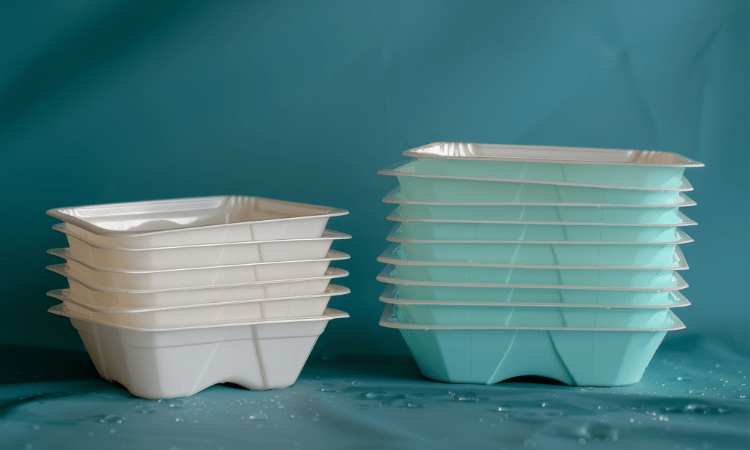Performance Tests

Packaging Performance Testing
Packaging needs to be tested not only for aesthetics or cost, but also for durability and functionality. Performance tests such as wash resistance, suitability for microwave use and antifog properties help to determine whether the packaging meets expectations throughout its life cycle. These tests are especially important when reusable packaging is exposed to harsh conditions, such as high temperature heating or cooling.
Washing Tests in Plastic Packaging
With the proliferation of reusable plastic packaging, it has become even more important to ensure its safety in terms of cleanliness and hygiene. Washing tests, which come into play at this point, are applied to evaluate the durability and performance of the packaging material against washing processes.
Wash tests test the extent to which plastic packaging retains its structure under specific temperatures, detergents and mechanical action in domestic or industrial dishwashers. These tests determine whether negative effects such as cracking, discoloration, deformation, loss of tightness or print erasure are observed on the surface of the packaging.
- Keeping hygienic packaging that will come into contact with food again,
- Maintaining the physical integrity of the packaging and ensuring its reusability,
- Preventing chemical spoilage that could put consumer safety at risk.
Microwave Resistance in Plastic Packaging
There is a risk that plastic packaging may deform, melt, leak or leach harmful chemicals into food when used in microwaves. For this reason, manufacturers should test the suitability of their packaging for microwave use with scientific methods. At the same time, the accuracy of the phrase "suitable for microwave" on the product label must be proven by these tests.
As part of the microwave resistance test, the packaging material is tested in a microwave oven at a specific temperature (e.g. above 100 °C) for a specified period of time. During this process;
- Physical integrity of the packaging (deformation, melting, softening),
- Sealing feature,
- Possible substance migration into food (risk of chemical migration),
- The behavior of elements such as the cover, label or print is evaluated.
Antifog Control in Plastic Packaging
Antifog is a coating that prevents fogging by allowing condensed water droplets to form a large surface film on the inner surface of the packaging material. This allows the consumer to see the contents of the product clearly. Packaging without antifog, especially in cold chain products, can cause intense fogging due to temperature changes, which can create the impression that the product is of poor quality or spoiled.
Antifog tests are performed to evaluate the behavior of the packaging in condensation forming environments. In a typical test process:
- The package is placed in a specific temperature and humidity environment (e.g. a package cooled to 5 °C is transferred to a temperature of 25-30 °C with 80-90% relative humidity).
- The amount and duration of fogging of the inner surface of the package and its effect on clarity are observed.
- In addition to visual assessment, some tests can be supported by photography or light transmission measurements.
Why Nanolab?
NANOLAB is an analysis center that performs all these tests for plastic packaging in accordance with national and international standards and stands out with its expert staff and advanced laboratory infrastructure. We support manufacturers to develop reliable, high quality and competitive packaging by offering test solutions specific to the intended use and market requirements of each product.

